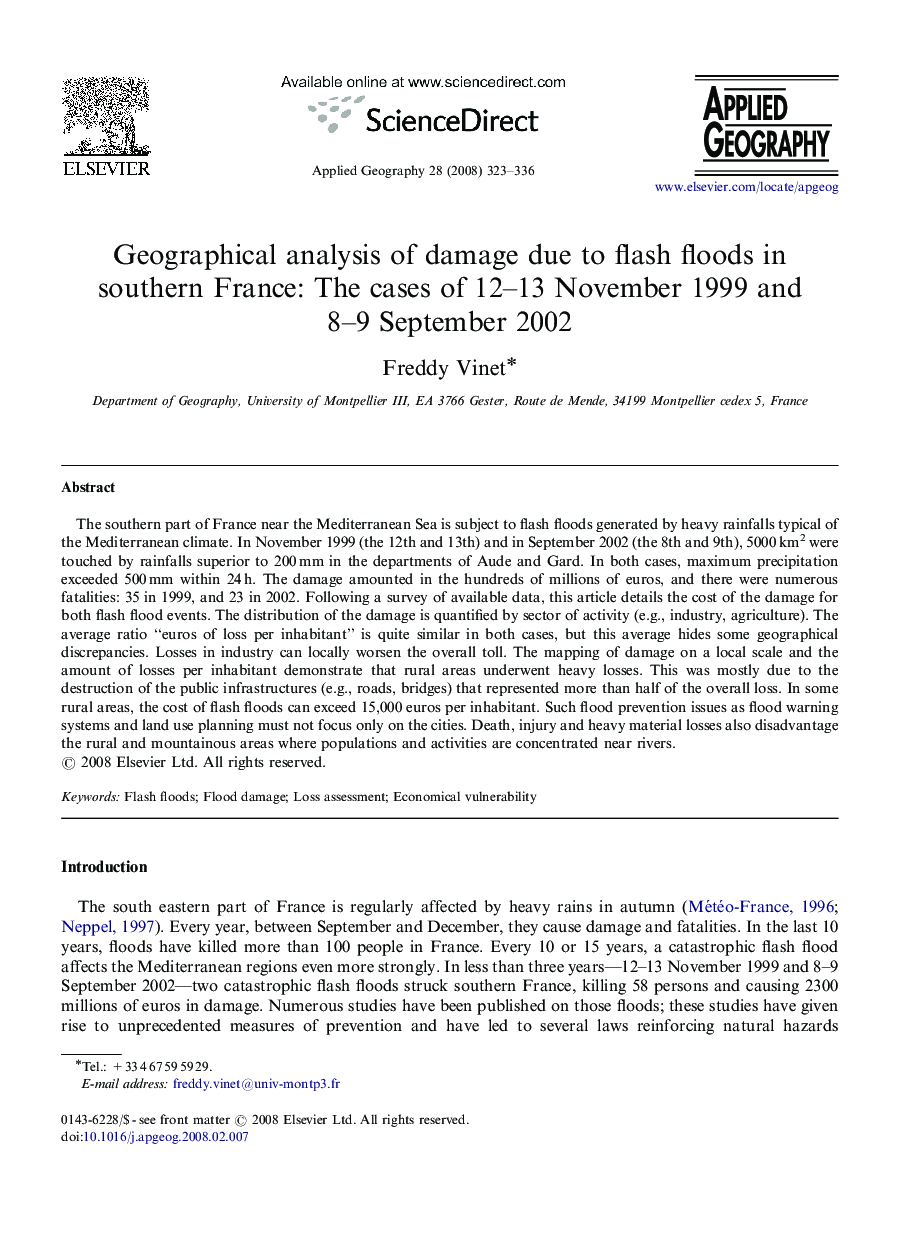| Article ID | Journal | Published Year | Pages | File Type |
|---|---|---|---|---|
| 83710 | Applied Geography | 2008 | 14 Pages |
The southern part of France near the Mediterranean Sea is subject to flash floods generated by heavy rainfalls typical of the Mediterranean climate. In November 1999 (the 12th and 13th) and in September 2002 (the 8th and 9th), 5000 km2 were touched by rainfalls superior to 200 mm in the departments of Aude and Gard. In both cases, maximum precipitation exceeded 500 mm within 24 h. The damage amounted in the hundreds of millions of euros, and there were numerous fatalities: 35 in 1999, and 23 in 2002. Following a survey of available data, this article details the cost of the damage for both flash flood events. The distribution of the damage is quantified by sector of activity (e.g., industry, agriculture). The average ratio “euros of loss per inhabitant” is quite similar in both cases, but this average hides some geographical discrepancies. Losses in industry can locally worsen the overall toll. The mapping of damage on a local scale and the amount of losses per inhabitant demonstrate that rural areas underwent heavy losses. This was mostly due to the destruction of the public infrastructures (e.g., roads, bridges) that represented more than half of the overall loss. In some rural areas, the cost of flash floods can exceed 15,000 euros per inhabitant. Such flood prevention issues as flood warning systems and land use planning must not focus only on the cities. Death, injury and heavy material losses also disadvantage the rural and mountainous areas where populations and activities are concentrated near rivers.
